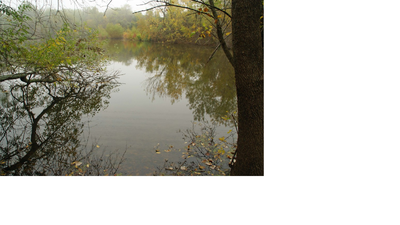JJDZ Soil
Classification
- Domain: Bacteria
- Phylum: Proteobacteria
- Class: Gammaproteobacteria
- Order: Enterobacterales
- Family: Enterobacteriaceae
Species
- Escherichia coli
- NCBI Link: Escherichia coli Taxonomy: [1]
Habitat Information
- Soil Sample Location: Copperfield Park and Greenbelt - 1425 E Yager Ln, Austin, TX 78753
- Soil Collection Date & time: 9/7/2017 @ 10:00 AM
- Conditions Present at time of soil collection:
- No recent rain within past 48 hours
- Temperature was 71 degrees F
- Soil sample was retrieved at a depth of roughly 3 inches and about 6-8 inches from creek bed.
- Description of Area:
- Pond and creek area
- Moderate erosion
- Wildlife present (actually saw a coyote when collecting sample)
- Area was damp and wet (close to creek bed)
- Area gets roughly 1/2 day of sunlight everyday
Description and Significance
Antibiotic resistance in E. coli is of particular concern because it is the most common Gram-negative pathogen in humans, the most common cause of urinary tract infections, a common cause of both community and hospital-acquired bacteraemia as well as a cause of diarrhea. In addition, resistant E. coli strains have the ability to transfer antibiotic resistance not only to other strains of E.coli, but also to other bacteria within the gastrointestinal tract and to acquire resistance from other organisms. [2]
- Colonial Appearance:
- Shape: Circular
- Margin: Entire
- Elevation: Raised
- Size: Punctiform, small
- Texture: Smooth
- Appearance: Shiny
- Pigmentation: Non-pigmented / colorless
- Optical Property: Translucent
Genome Structure
- E. coli has only one circular chromosome
- Escherichia coli strain S17-13, complete genome
Genes (total) :: 5,359
CDS (total) :: 5,234
Genes (coding) :: 4,987
CDS (coding) :: 4,987
Genes (RNA) :: 125
rRNAs :: 8, 7, 7 (5S, 16S, 23S)
complete rRNAs :: 8, 7, 7 (5S, 16S, 23S)
tRNAs :: 90
ncRNAs :: 13
NCBI Link: E. coli Strain S17-13: [3]
Cell Structure, Metabolism and Life Cycle
- Cell Structure: E. Coli is a Gram-negative, facultatively anaerobic, rod-shaped, coliform bacterium. [4]. It also possesses adhesive fimbriae and a cell wall that consists of an outer membrane containing lipopolysaccharides, a periplasmic space with a peptidoglycan layer, and an inner, cytoplasmic membrane. [5].
- Metabolism: E.coli has fairly simple nutritional requirements. It is a heterotrophic organism, therefor it cannot produce its own food and it must obtain nutrition and energy by taking it from other organisms, most often its host. Carbon is very important to e-coli, and it obtains its carbon from glucose.
- Life Cycle: E-coli has a very rapid growth cycle
Interesting features of cell structure; how it gains energy; what important molecules it produces.
Physiology and Pathogenesis
Here is a list of some Biochemical characteristics of E. coli: Characteristic Reaction Lactose 37oC Acid+, gas+ Lactose 44oC Acid+, gas+ Indole 37oC Usually produced Indole 44oC Usually produced Mannitol Fermentation +, usually with gas Methyl-Red + Voges-Proskauer - Citrate - Urea No hydrolysis H2S No blackening Lysine Decarboxylase + Gelatin Liquefaction -
[[Biochemical characteristics, enzymes made, other characteristics that may be used to identify the organism; contributions to environment (if any). If relevant, how does this organism cause disease? Human, animal, plant hosts? Virulence factors, as well as patient symptoms]]
References
https://www.ncbi.nlm.nih.gov
https://microbewiki.kenyon.edu/index.php/Escherichia_coli
http://bioweb.uwlax.edu/bio203/s2008/moder_just/nutrition.htm
Author
Page authored by Jennifer Jordan and Denise Zamarrippa, student of Prof. Kristine Hollingsworth at Austin Community College.

